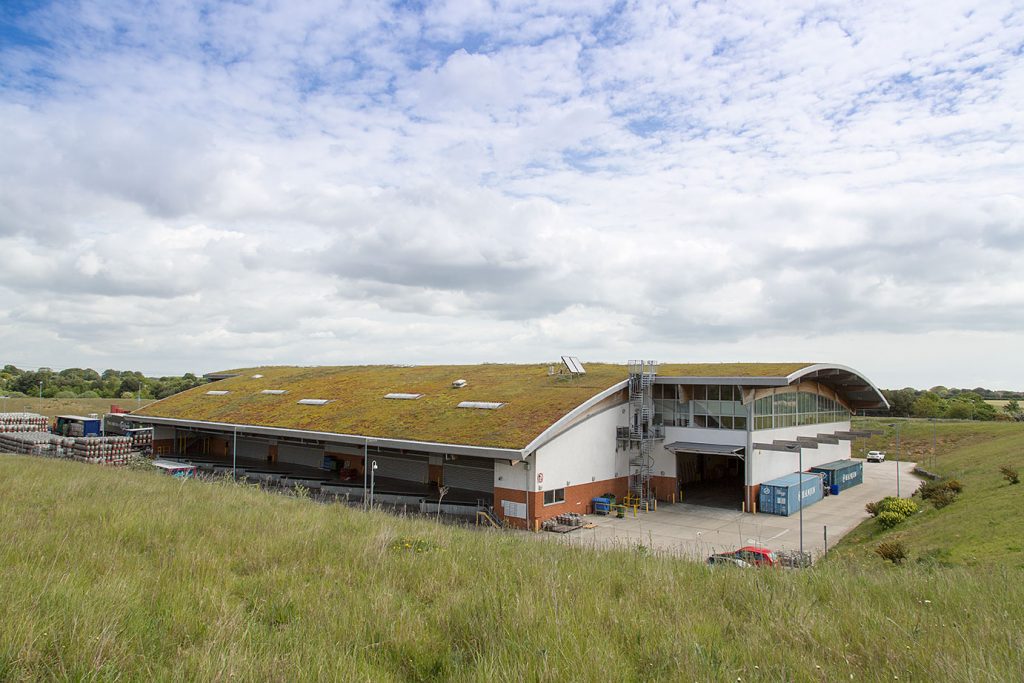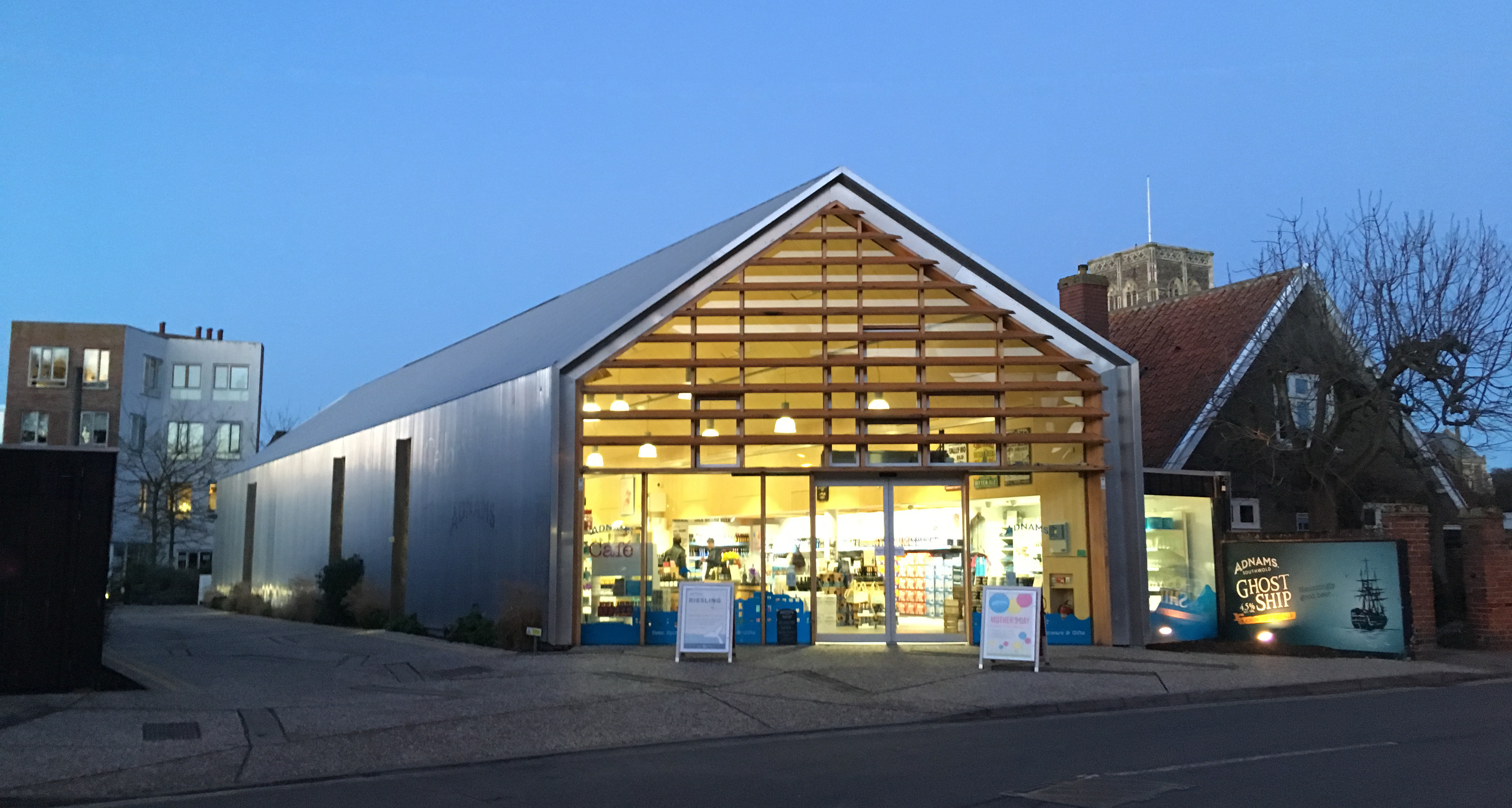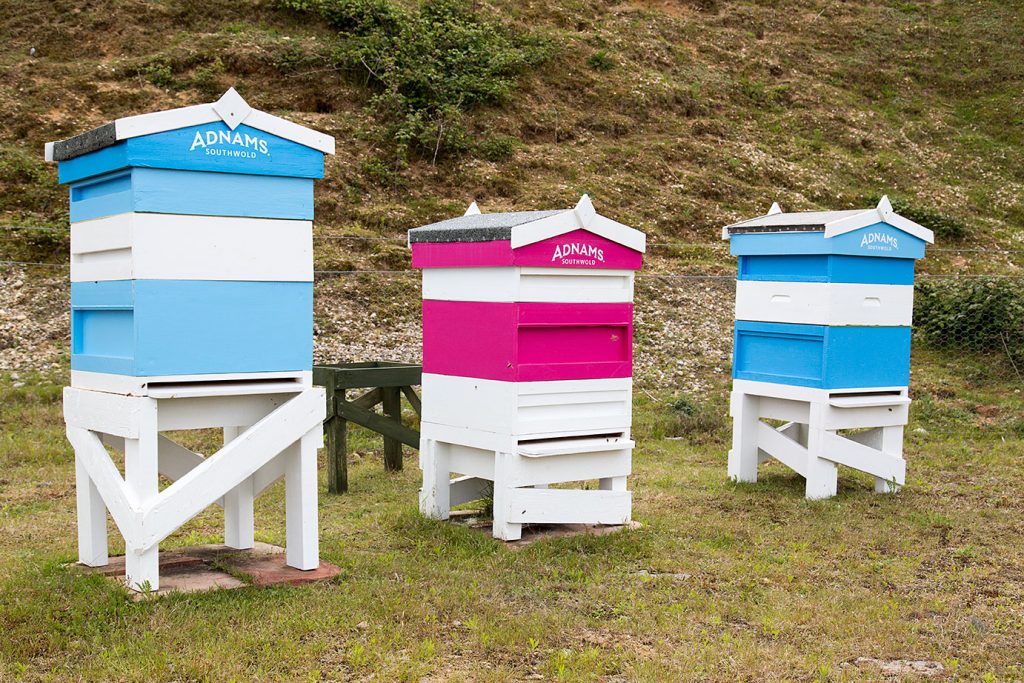![Adnams Hempcrete Distribution Centre, Southwold. Credit: Sky Garden Ltd (Own work) [CC BY-SA 4.0 (https://creativecommons.org/licenses/by-sa/4.0)], via Wikimedia Commons](https://ebuilding.blog/wp-content/uploads/2018/03/Sky_Garden_Adnams_Brewery_Green_Roof-945x385.jpg)
Not only have Adnams Brewers in Suffolk built their distribution centre from hempcrete, but their other sustainability work is impressively broad ranging. I interviewed employee Ben Orchard, winner of the 2018 EDIE Sustainability Manager of the Year award.
This accolade is just one milestone in the history of a company that thrives on an ethos of ‘doing the right thing’. CEO Andy Wood has led with an emphasis on sustainability, and was awarded an OBE in 2013 for ‘services to business and the community in East Anglia’. Meanwhile, chairman Jonathan Adnams was also awarded an OBE in 2008 for corporate social responsibility.
The greatest symbol of their work is the distribution centre, built in 2006 of hempcrete blockwork. The 0.6 hectare sedum roof is supported by two metre thick, 41.6 metre long glulam beams, including an impressive 35 metre column-free span.
According to the Green Suffolk website, the equivalent of 100 to 150 tonnes of CO2 is locked up within the building’s walls. Factoring this against the CO2 emissions during the construction of a brick and block building of the same size, this method of construction has enabled a saving of at least 450 tonnes of CO2.

The distribution centre performs well: nestling in the landscape and almost invisible from the road, it needs no artificial refrigeration or heating to keep the beer at the desired storage temperature. Air locks and active airflow management are all that is required.
The company deliberately links economic success with environmental responsibility: the head of finance is also the head of sustainability. Environmental Science graduate Ben Orchard was employed in 2012 to work with him as environmental sustainability manager.
Their philosophy is that there is a clear business case for sustainability, in terms of branding, economics and business longevity. Together they developed four focus areas: Carbon, Waste, Water, and Biodiversity.
Carbon
Since 2008, Adnams’ carbon emissions have reduced by 49% per pound of revenue. The energy efficient hempcrete distribution centre is just one reason for this. Adnams have switched to 100% renewable electricity, via Smartest Energy, and have recently completed a £50k replacement of warehouse and retail space lighting to LED.
Furthermore, Ben has changed the design of beer bottles with embodied carbon in mind. They have been reduced in weight by 38%, meaning less energy is required to transport them. Meanwhile, switching from blue to brown glass has achieved a 21% reduction in embodied carbon by weight.

The company is trialling biomethane as a fuel for its HGV delivery vehicles, and has invested in an electric van, painted bright pink to attract attention and inspire others to consider electric vehicles.
Having branched into producing spirits, Adnams are working to link the processes to save energy. A tactic under development is the recovery of heat from some of the distilling processes, and using the recovered heat back in the brewery.
Waste
Waste is another area that displays Adnams’ holistic approach to sustainability. They helped fund an anaerobic digester for liquid brewing waste, while cooking oil from their hotels is used in biodiesel. Meanwhile, their hotels and pubs have switched to using biodegradable PLA drinking straws.

Adnams drinks cans are made from up to 90% recycled metal, and the company also produces clothing that contains 40% recycled plastic. Suffolk is a ‘zero-to-landfill’ county, and anything that cannot be recycled goes to a local energy from waste plant.
Water
Water conservation is vital to the company: without it, Adnams could not continue. For instance, 60 litres of water are needed to produce one litre of gin, so they are researching ways to reduce this. Meanwhile, 1,000,000 litres of rainwater are harvested from the distribution centre roof each year, and used to flush staff loos and wash the lorries.
Biodiversity
Biodiversity may be the hardest area to link to business finance, but is conversely perhaps the most inspiring. From the bees kept in hives painted to resemble bathing huts, producing honey served in Adnams hotels, to the resident kestrel nicknamed Ken, this is a site with thriving wildlife.

Preserving the nearby coastal habitat and tackling plastic pollution, Adnams have adopted a 1km stretch of the Southwold coastline. Here they organise community beach clean-ups three times a year. And money from the carrier bag charge is donated to the Suffolk Wildlife Trust – builders of the timber visitor centre at Bradfield Woods.
Multifaceted sustainability
Echoing the 17 Sustainable Development Goals set by the UN Paris Climate Change Agreement, Adnams shows how a business can thrive when sustainability is factored into all areas. Since 2008 they have doubled their market share in an industry that is declining, recording a nine per cent growth in beer trade in 2016 alone. Their community involvement and values have given them an iconic brand, and they are aware of their ability to inspire.

Photo credits: Adnams